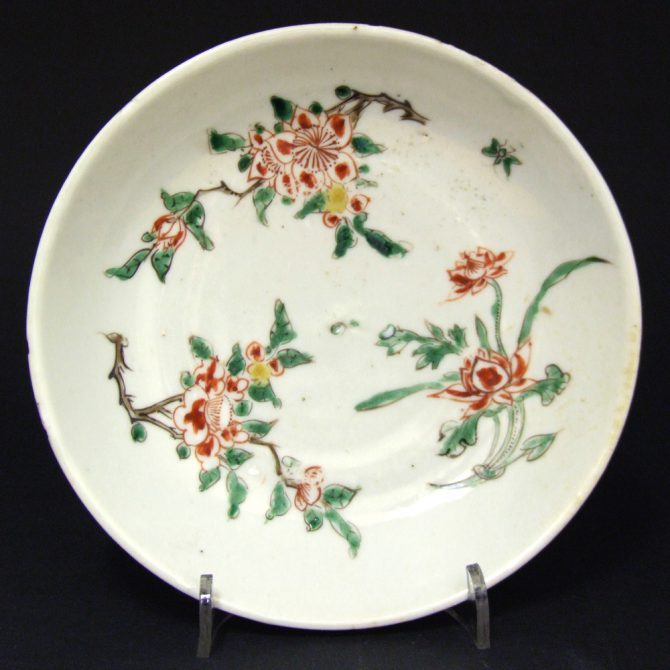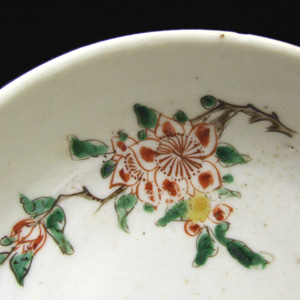
CHONGZHEN 1628-1644. Transitional Porcelain.
A Late Ming Transitional Porcelain Wucai Dish for the Japanese Market, Chongzhen Period 1628 – 1644. Decorated with `Floating Branches`.
SOLD
- Condition
- Very good, a few very minor rim frits. Some slight kiln discolouration.
- Size
- Diameter : 15 cm (6 inches).
- Provenance
- N/A
- Stock number
- 21578
Information
Wucai :
Wucai means five coloured decoration. This consists of the overglaze enamel colours ; red, green, and yellow, underglaze cobalt blue and the white of the porcelain itself. Apocryphal Marks :
Apocryphal marks are frequently encountered on Chinese porcelain particularly on Kangxi Blue and White Porcelain, the mark of the Ming Emperor Chenghua who reigned from 1465 to 1487 being by far the most common, other Ming marks include Jiajing (1522-1566) and less frequently Wanli (1573-1620). These marks were not added to the piece to deceive, but more as a sign of reverence to earlier potters of the Ming dynasty (1368-1644). Occasionally they are used on pieces copying Ming Porcelain, these objects were probably made for collectors who could not afford the Ming original. Tianqi is an early period for such an apocryphal mark.
Ming Porcelain for Japan :
During the late Ming Period the Chinese made a large among of porcelain for the Japanese market, it was made from the Wanli period (1573-1620) and ended in the Chongzhen period (1628-1644), the main period of production being the 1620`2 and 1630`s. The porcelain objects produced were made especially for the Japanese market, both the shapes and the designs were tailored to Japanese taste, the production process too allowed for Japanese aesthetics to be included in the finished object. Its seams firing faults were added, repaired tears in the leather-hard body were too frequent to not, in some cases, be deliberate. These imperfections as well as the fritting Mushikui (insect-nibbled) rims and kiln grit on the footrims all added to the Japanese aesthetic. The shapes created were often expressly made for the Japanese tea ceremony meal, the Kaiseki, small dishes for serving food at the tea ceremony are the most commonly encountered form. Designs, presumably taken from Japanese drawings sent to China, are very varied, often using large amount of the white porcelain contrasting well with the asymmetry of the design.
